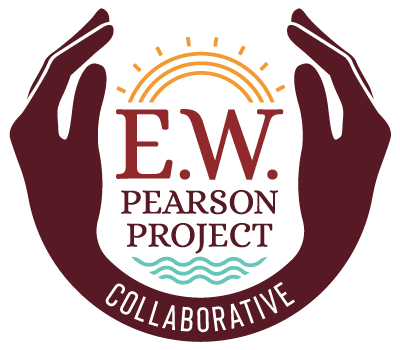Our Services
EDUCATION
The E. W. Pearson Project Collaborative’s members are actively working to address the academic achievement gap. Quality affordable after-school & summer care for children are significant needs for parents. Each of the Collaborative partners have school aged programs that are offered during the school year and/or during the summer. The programs are either free or offered on sliding scale rate. Many of the programs offer opportunities for the students to earn stipends.
The Collaborative is committed to providing holistic approaches to the work that will be completed. The traditional method of tutoring students via, “rote learning” has not been successful for students who are currently participating in the Collaborative’s student focused programs.
Burton Street Community Association
Within the Burton Street Community students are participating in a mural development process, which is being led by Lara Nguyen, muralist, co-owner of Stone Cloud Studio & Professor of Painting at Warren Wilson College. The process includes scholarly research on the historically African American neighborhood.
Ms. Nguyen is educating the youth about what was once a thriving neighborhood with businesses and community elders. The hope is to help grow the future business owners by teaching and educating the students about the past successful business owners and community leaders. This experiential learning opportunity is fostering creative problem-solving skills, building trust in community and helping form strong communication skills within the program participants.
East End Valley Street Neighborhood
East End Valley Street Neighborhood hosts Summer Enrichment programs through a collaboration with the Rosa Walker Advancement Initiative. One of the programs is the STEM camp. Ages 5-8 uses Lego Technic with motors. Ages 9-14 use LEGO EV3 robotics. Program serves 28 students. The objective of the camp is to help students learn the fundamentals of science, technology, engineering, & mathematics. The knowledge in these areas will foster community & civic engagement, team building & self-confidence.
The camp is held at St. James AME Church. The camp uses 15 to 20 volunteers from the neighborhood to assist with the camp. A small stipend is awarded to a limited number of teen volunteers who help the students during instruction time & oversee certain activities.
Shiloh Community Association
In Shiloh students earn funds each Saturday as they work in the Community Garden. During their time with the Garden Staff students learn planting & culinary skills as the learn and practice ways to improve their work ethics. Student participants also receive financial literacy education to improve their ability to budget, save & make smart decisions regarding their finances. Students must write an assessment of the activities & computers would assist in making the process easier for the students.
Project Lighten Up Virtual Learning and After School program
Project Lighten Up uses computers to learn how to code code-able robots. Additionally, students are able to complete and print their homework prior to leaving the site. In addition to academic assistance after school, the students participate in the Arboretum’s Eco-Explore Program. Eco-Explore program is “an incentive-driven science enrichment program that engages Kindergarten through eighth grade students in guided and self-directed citizen science activities. Each session, one particular area of field ecology (botany, herpetology, entomology and ornithology) is highlighted with public programming, self-guided activities, a public event and special invitation- only programs. Students engage as active participants of the scientific method as they record observations of organisms found in their neighborhoods, libraries and at the Arboretum.
As previously stated, The Asheville City School system has the largest achievement gap within the State of North Carolina (Mountain Xpress, 2019). It also is the “fifth-largest achievement gap in the nation, and Chapel Hill-Carrboro Schools had the second-largest, according to “The Geography of Racial/Ethnic Test Score Gap: CEPA Working Paper No. 16-10” from the Stanford Center for Education Policy Analysis” (Carolina Press, 2019).
